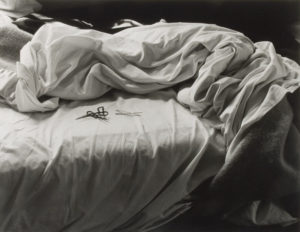Group f.64
By Mary Street Alinder, Bloomsbury
Group f.64 may be the most influential collection of photographers ever. That influence can still be felt today and their work remains perennially popular. Monographs and retrospectives highlighting the work of individual members continue to be published ninety years later.
While Alfred Stieglitz may be credited with relentlessly working to make photography a respected art form, the photographers of Group f.64 defined the vision that would dominate and influence serious art photography for most of the 20th century.

In 1966, John Szarkowski wrote in The Photographer’s Eye, that “photography was born whole,” a new art and not some offshoot of painting or drawing.
Szarkowski’s assessment surely reflected the work of Group f.64, whose uniting vision might be characterized as believing in the intrinsic qualities of the photograph to portray the world. And, in portraying the world, whether it might be a pepper, a leaf, the Face of Half Dome, or the curves of Charis Wilson, the photographer could elevate a thing into art through “straight” photography, respecting the integrity of the original exposure.
In Group f.64 Mary Street Alinder has not only written the definitive history of this important movement, but she has successfully brought to life the legendary personalities that comprised the movement. While the book is certainly of interest to photographers, it is fascinating storytelling for anyone who has ever looked at and admired an image by Edward Weston, Ansel Adams, Imogen Cunningham, or any other member of f.64.
A side note here, when Jim Alinder taught photography in the art department at the University of Nebraska in the 1970s, I was a journalism student who managed to weasel my way into every art class that Jim taught. His classes and his mentoring have stuck with me for a half century. I like to say that Jim ruined me, because I came away from those classes certain that photography was important. No matter what else I did in life, I have always been haunted by the knowledge that in my heart, what really matters is photography.

At the time, Mary was a young nurse who taught Lamaze classes in their home and after I graduated from college, my first wife and I took classes from her. In the ensuing years, the Alinders moved back to California where Jim became executive director of Friends of Photography and Mary embarked on a career as a photography historian and the official biographer of Ansel Adams.
When Group f.64 championed straight photography, they placed themselves in opposition to the Pictorialists. Now largely forgotten, the pictorialists espoused a romantic version of photography that often included heavy manipulation of the negative and print to produce a more “painterly” image.
The dominant movement in art photography since the late 19th century, it represented everything Group f.64 was opposed to. One of the more entertaining and interesting chapters in Group f.64 details the war between Ansel Adams and others in Group f.64 and William Mortensen, the leading West Coast proponent of pictorialism in the 1930s. Mortensen was a prolific writer and proponent of heavy manipulation of photographs in pursuit of creating high art.
Alinder’s chapter on the bitter, personal battle between Mortensen and Adams is entertaining and insightful. Despite her long-standing association with Adams, she provides an evenhanded account of the dispute, which at the time was something of a battle for the soul of American photography.
That Adams and Group f.64 ultimately won that battle is evidenced by the fact that Mortensen today is largely forgotten, generally relegated to brief mentions in most histories of photography. Adams had a powerful ally in Beaumont Newhall, who relegated Mortensen to one critical mention in the middle of Newhall’s description of Adams in his history of photography.
Adams and Newhall were helped by the fact that Mortensen, while something of a genius in the darkroom, was burdened by terrible, kitschy taste with a penchant for cheesecake nudity.
Still, there is certain irony in that today, manipulation of photographs as well as the directorial posing of subjects is not just widely accepted in the world of 21st Century art but may even be the dominant practice. Today, it is Adams images, printed on everything from postcards to calendars to hoodies that are popular among the masses that once flocked to Mortensen’s work.
The chapter on Mortensen is just one of many subjects that Alinder explores as she recounts the history and significance of Group f.64. Overall, the book represents an essential history for anyone curious about the individuals and movement that defined photography beginning in the first half of the 20th Century and which, today, continues to hold strong sway over photography.